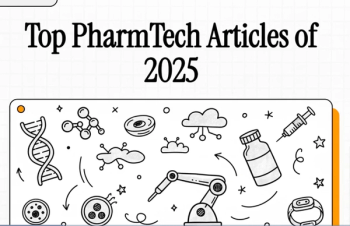Editor’s Note: This article was originally published online on March 10, 2021.
- Pharmaceutical Technology-04-02-2021
- Volume 45
- Issue 4
Pressure Mounts for FDA to Ramp Up Drug Inspections
Concerns over vulnerability in the supply chain has increased pressure on FDA to renew site visits of domestic and foreign facilities.
For years now, US Congressional leaders and policy watchdogs have urged FDA to bolster its oversight of foreign drug manufacturing facilities to better ensure the quality and safety of the growing volume of medicines and ingredients imported to the United States. With the cancellation of most field site visits in 2020 due to the coronavirus pandemic, FDA now faces a serious backlog in inspections both in the US and abroad, raising the risk of shortages in vital medicines as well as access to needed treatments to counter new variants to the COVID-19 virus. Greater scrutiny of the vulnerability in the biopharmaceutical supply chain, moreover, as more drug manufacturing has shifted overseas, has increased pressure on FDA to renew site visits of facilities at home and around the world.
FDA Acting Commissioner Janet Woodcock responded to these concerns in a posting on March 18, 2021 that outlines a range of alternative methods the agency is using to verify the quality systems used to produce regulated products (1). She added that FDA is studying how to incorporate additional data sets and new technologies for facility oversight and will work with industry to expand the use of remote interactive evaluations, such as livestreaming video of operations, teleconferences, or screen sharing. Moreover, Woodcock indicated that as part of efforts to prepare for “resuming a more normal state of operations,” FDA is examining “how best to address inspectional activities that were paused due to the pandemic.”
Even before the COVID-19 pandemic, FDA faced significant challenges in conducting timely inspections of foreign facilities, namely a shortage of trained investigators, the need to pre-announce facility inspections, and language barriers that made site assessments more difficult and less reliable. The pandemic has made the situation even worse, according to the latest report from the Government Accountability Office (GAO), which finds that FDA failed to complete more than 1000 of planned surveillance inspections in 2020 due to travel restrictions and safety concerns imposed by the pandemic. FDA conducted only three foreign mission critical inspections and 52 domestic inspections between March and October 2020, compared to more than 600 foreign inspections during the same period in 2019 (2). FDA’s China office resumed some preapproval inspections in October 2020, but plans for surveillance inspections remain uncertain.
Backlog raises risks
GAO predicts that continued postponement of planned surveillance inspections to ensure compliance with good manufacturing practices (GMPs) will greatly increase the number of facilities in high-risk categories (i.e., those never inspected or not visited for five years or previously cited for infractions). Such developments could undermine FDA’s risk-based inspection program, which aims to better target agency resources to operations most likely to raise pharmaceutical quality and safety issues.
This serious drop-off in manufacturing inspections comes after years of complaints from GAO and other analysts about inadequate FDA oversight of the growing number of foreign firms producing drugs and APIs for the US. At a hearing last month before the House Appropriations subcommittee that handles FDA funding, Mary Denigan-Macauley, GAO health care director, expressed fears that the mounting inspection backlog could take years to address (3).
As in several past reports, GAO criticizes certain FDA inspection practices as limiting the effectiveness of foreign site visits. A main target is the agency’s practice of providing up to 12 weeks advance notice of its plan to inspect a foreign facility, a timeframe FDA officials claim is necessary to ensure that a plant is open and operating before making costly arrangements to send an inspector. Greater use of FDA staff posted in China or India can reduce the pre-announcement timeframe to a few days, but these operations are limited. The practice of relying on foreign companies to select translators for inspections is also noted by GAO, which proposes that FDA adopt the European Union policy of providing a manufacturer with a list of approved translators for the company to select one and pay for the service. In the past year, more product sampling and testing at US borders led to FDA putting 54 foreign manufacturers on “import alert,” but that addresses only a fraction of potential problems and is “not a substitute for an inspection,” according to the GAO analysts.
FDA’s field inspection program continues to have difficulties in hiring and training investigators, particularly those able and willing to travel overseas. The legislators noted that Congress provided additional funds in 2020 to address problems with the foreign inspection program, but that the resources were used primarily to update and correct FDA’s inventory of active manufacturing sites to better identify those overseas facilities actually subject to inspection. It remains to be seen if FDA is able to address some of these issues with a portion of the $500 million in additional funding provided to bolster agency programs and initiatives to combat COVID-19.
Manufacturers and agency stakeholders maintain that inspections should resume, with investigators being vaccinated and provided protective gear. This raises the issue of whether inspections of pharmaceutical producers and research sites are considered “essential” under current guidelines and therefore should override travel restrictions and other limitations on federal agency programs.
In addition to the cancellation of most GMP inspections, GAO also notes a sharp decline in preapproval inspections usually conducted to support market approval of a new therapy. While this change did not delay approval of most new applications for much of last year, as many facilities had been assessed prior to the inspection shut-down, months of inactivity now appear to be taking a toll on the agency’s ability to confirm the capabilities of a facility not inspected in recent years (4).
Members of Congress charged with approving FDA’s annual budget will further address these issues in the coming months. Proposals on the table may seek to encourage more biopharmaceutical production in the US by authorizing “country of origin” labeling or public disclosure of a manufacturer’s compliance status, along with added FDA support for modern manufacturing systems that can better ensure product quality with less oversight.
References
1. J. Woodcock and J. McMeekin, “FDA’s Ongoing Use of Inspectional Tools for Ensuring Access to Safe, Quality Food and Medical Products During the COVID-19 Pandemic,” FDA Voices Blog,
2. GAO,
3. M. Denigan-Macauley, “
4. J. Wechsler,
Article Details
Pharmaceutical Technology
Vol. 45, No. 4
April 2021
Pages: 14-15
Citation
When referring to this article, please cite it as J. Wechsler, “Pressure Mounts for FDA to Ramp Up Drug Inspections,” Pharmaceutical Technology 45 (4) 2021.
Articles in this issue
over 4 years ago
Advanced Manufacturing Technologies Shift Outside the Boxover 4 years ago
Reshoring and Expanding API Manufacturing Capabilitiesover 4 years ago
Balancing the Art and Science of Topical Drug Formulationover 4 years ago
Focusing on Accelerated Formulation Strategiesover 4 years ago
Understanding the Impact of Annex 1 on Isolator Operationover 4 years ago
Blocking the Threat of Counterfeit Medicinesover 4 years ago
Limitations and Advances in Dissolution TestingNewsletter
Get the essential updates shaping the future of pharma manufacturing and compliance—subscribe today to Pharmaceutical Technology and never miss a breakthrough.





